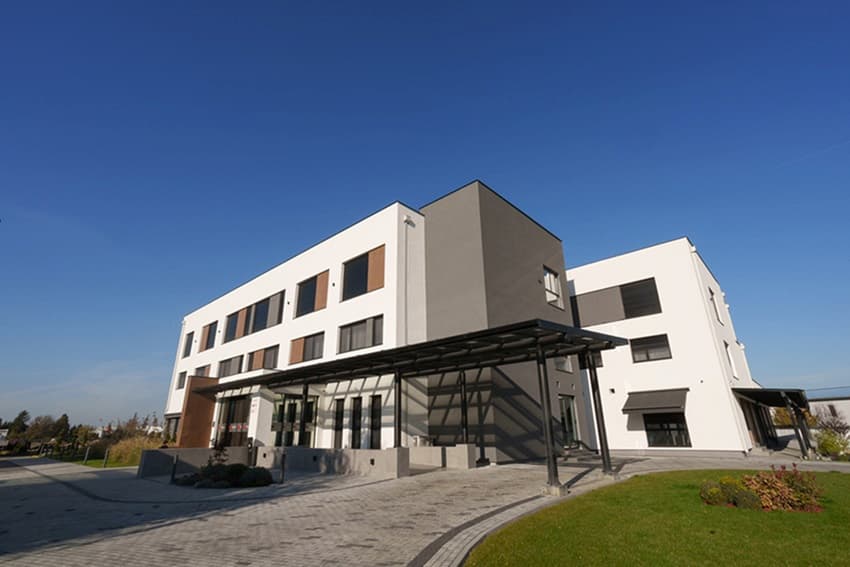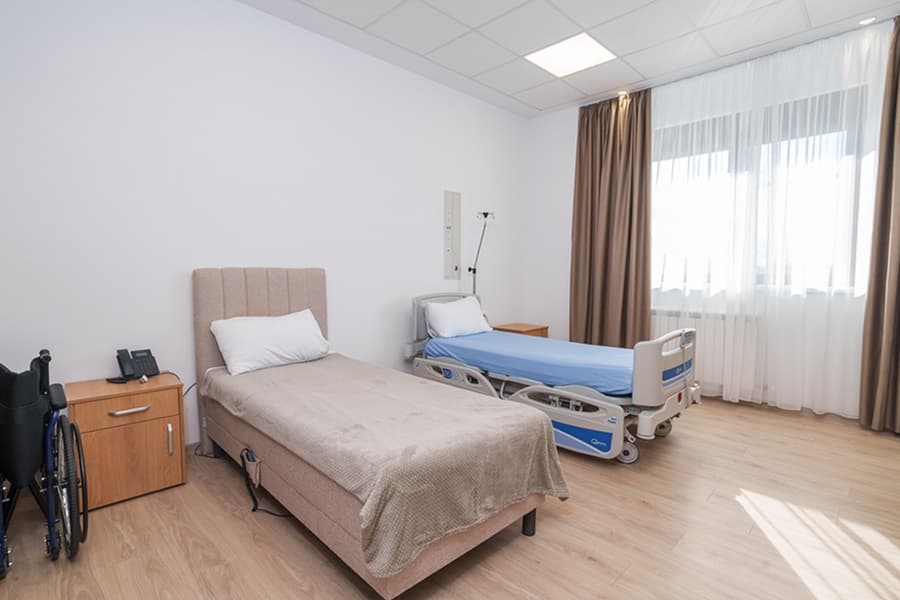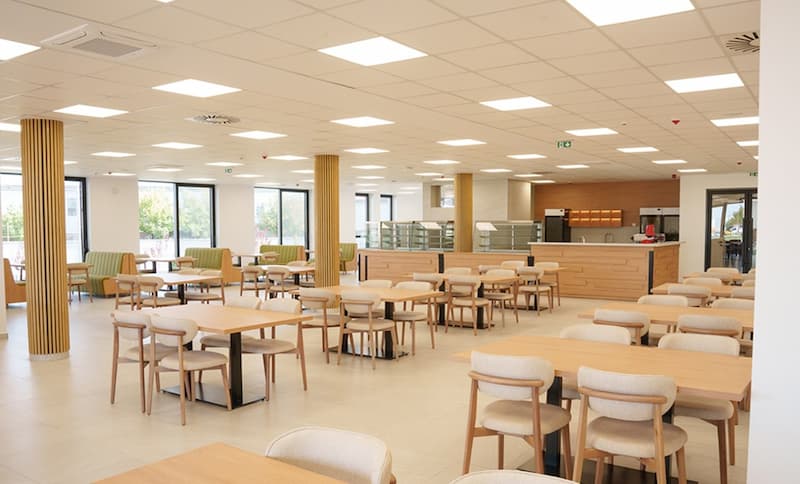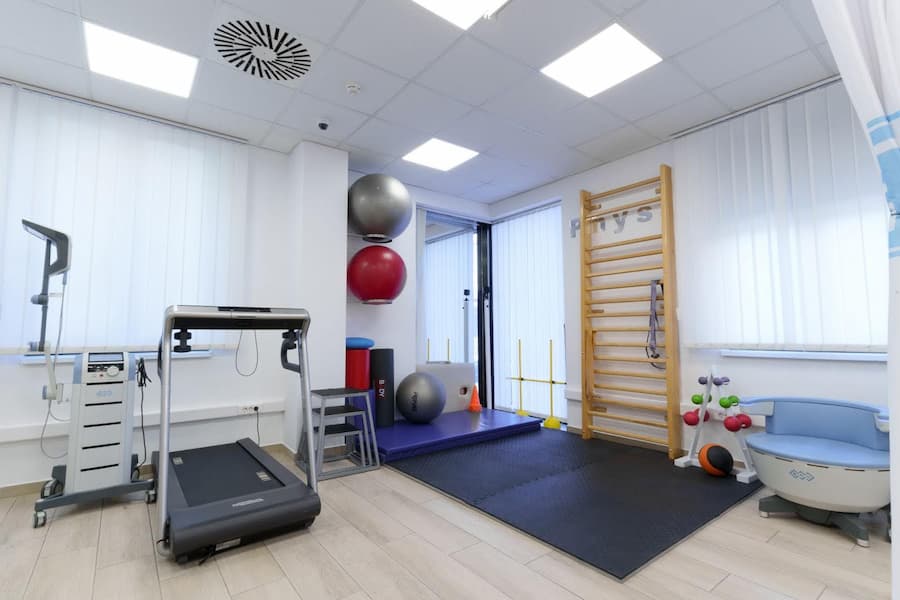Le cellule staminali per il trattamento delle lesioni del midollo spinale sono una delle aree cliniche e di ricerca più promettenti, in quanto offrono nuove possibilità di recupero e di miglioramento della qualità della vita. Nei casi di danni al midollo spinale, tra cui le lesioni dovute alle attività sportive, il trattamento con cellule staminali per il midollo spinale introduce una dimensione completamente nuova nelle prospettive di mobilità cronica e di sollievo dal dolore.
In questo articolo scoprirete se le cellule staminali possono curare le lesioni del midollo spinale, se esiste un trattamento con cellule staminali per la paralisi, qual è il costo del trattamento con cellule staminali per le lesioni del midollo spinale e dove è possibile ottenere un trattamento con cellule staminali per le lesioni del midollo spinale.
Comprendere le lesioni del midollo spinale e l’impatto della terapia con le cellule staminali
Le lesioni del midollo spinale hanno un impatto significativo sulla vita delle persone, soprattutto in termini di mobilità, sensazioni e indipendenza. I nuovi progressi nel campo delle cellule staminali per la cura del midollo spinale traumatico potrebbero portare alla possibilità di ripristinare le funzionalità e offrire opzioni per un futuro diverso.
Cosa sono le cellule staminali?
Fondamentalmente, le cellule staminali sono le cellule principali dell’organismo, in grado di trasformarsi in vari altri tipi di cellule. Questo tipo di cellule svolge un ruolo cruciale nella crescita, nella riparazione e nel rinnovamento del nostro corpo per tutta la vita.
Cellule staminali per il midollo spinale: perché sono promettenti
Si potrebbe pensare che le cellule staminali curino le lesioni del midollo spinale o che le cellule staminali siano una cura per la paralisi; si tratta invece di un nuovo metodo che apre nuove visioni per il recupero e il miglioramento della qualità della vita dopo le lesioni del midollo spinale.
La riparazione da parte delle staminali comporta la rigenerazione delle cellule nervose, la riduzione dell’infiammazione e stimola la guarigione.
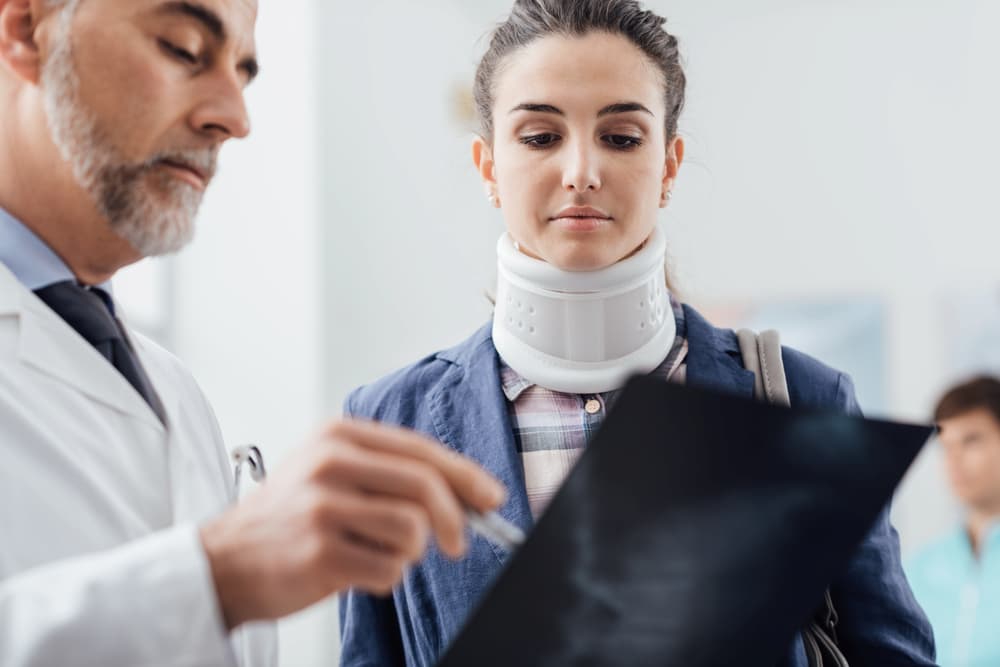
Meccanismi della terapia con cellule staminali per la riparazione spinale
La terapia con cellule staminali per la riparazione dei danni alla colonna vertebrale è un processo piuttosto complesso che mira a ripristinare la funzionalità e a facilitare la riparazione dei tessuti spinali danneggiati. Il meccanismo funziona nel modo seguente:
- Le cellule staminali secernono diversi fattori di crescita e citochine che migliorano l’ambiente circostante e aiutano le cellule locali a sopravvivere, crescere e riparare l’area lesa.
- L’applicazione di cellule staminali per il midollo spinale dovrebbe consentire di modulare le risposte immunitarie riducendo l’infiammazione nel sito della lesione, creando così un ambiente migliore per il recupero e la rigenerazione dei tessuti.
- Poiché le cellule staminali neurali assomigliano alle cellule neuronali, possono avere un effetto pronunciato nei casi di danno neuronale, comprese le lesioni del midollo spinale.
Contatti
Se desiderate avere maggiori dettagli sulla terapia con cellule staminali e sulla procedura, contattate il nostro consulente medico per ottenere informazioni complete su risultati attesi, durata del programma e costo.

Medical Advisor, Swiss Medica doctor
Tipi di cellule staminali utilizzate nella terapia del midollo spinale
La terapia con cellule staminali per la cura del midollo spinale coinvolge numerosi tipi di cellule staminali, ciascuna con proprietà e modalità d’azione diverse.
Recupero delle lesioni al midollo spinale con le cellule staminali mesenchimali (MSC)
Le cellule staminali mesenchimali multipotenti possono essere isolate dal midollo osseo e dal tessuto adiposo, nel caso di cellule proprie del paziente, o dal cordone ombelicale e dalla placenta, nel caso di cellule di donatori.
Le cellule staminali mesenchimali per le lesioni del midollo spinale secernono varie molecole bioattive che possono facilitare la riparazione dei tessuti, attenuare l’infiammazione e migliorare la sopravvivenza dei neuroni danneggiati. Le cellule staminali per le lesioni spinali hanno proprietà immunomodulatorie e, pertanto, contribuiscono a formare un ambiente favorevole alla rigenerazione.
Le cellule staminali neurali e il loro ruolo nella rigenerazione
Le cellule staminali neurali sono un tipo di cellula staminale che ha il potenziale per differenziarsi ulteriormente in neuroni, astrociti e oligodendrociti, tipi di cellule essenziali per il funzionamento del sistema nervoso. Le cellule staminali neurali possono essere ottenute da varie fonti, tra cui il cervello o il midollo spinale. Le cellule staminali neurali per le lesioni del midollo spinale possono migrare nel sito del danno e contribuire alla rigenerazione dei tessuti neurali, formando nuove connessioni neurali necessarie per il recupero funzionale.
Cellule staminali embrionali e cellule staminali adulte: quali sono più efficaci?
Il dibattito sull’utilizzo di cellule staminali embrionali o cellule staminali adulte nella terapia del midollo spinale è stato molto acceso a causa di preoccupazioni etiche.
Le cellule staminali embrionali possono dare origine a qualsiasi tipo di cellula del corpo, comprese le cellule tumorali. Inoltre, sollevano gravi problemi etici e di sicurezza.
Le cellule staminali adulte, come le MSC e le NSC, sono meno pluripotenti di queste, ma meno controverse e più sicure. Non possono differenziarsi in modo incontrollato o causare la crescita di tumori, come invece è possibile per le cellule staminali embrionali o fetali.
Lesioni del midollo spinale e cellule staminali: i vantaggi di questa terapia
Le lesioni del midollo spinale possono essere trattate in diversi modi utilizzando la terapia con cellule staminali; un aspetto fondamentale del trattamento è la riparazione delle regioni spinali danneggiate, promuovendo i loro meccanismi rigenerativi.
Miglioramento del processo di guarigione e riduzione dell’infiammazione
L’applicazione delle cellule staminali per il trattamento delle lesioni del midollo spinale mira a rilasciare citochine antinfiammatorie e fattori di crescita che aiutano a regolare le risposte infiammatorie comunemente associate alle lesioni del midollo spinale. Inoltre, facilita la rigenerazione e riduce l’infiammazione nel sito della lesione. La riduzione dell’infiammazione favorisce la riparazione e la rigenerazione dei tessuti, portando a periodi di recupero più brevi e a risultati più significativi.
Miglioramento della mobilità a lungo termine
In caso di lesione, il trattamento con cellule staminali per il midollo spinale potrebbe migliorare la mobilità a lungo termine dei pazienti.
Le cellule staminali sono in grado di rigenerare le vie neurali danneggiate e di favorire la creazione di nuove connessioni tra le cellule neurali, migliorando così le capacità motorie e la mobilità.
Attenuazione del dolore e miglioramento della qualità della vita
I pazienti con lesioni al midollo spinale possono provare dolore cronico e di lunga durata a causa del danno ai nervi. Le cellule staminali per le lesioni spinali aiutano ad indurre la riparazione dei tessuti danneggiati e a modulare le vie del dolore. Questo approccio olistico non si concentra solo sulla riabilitazione fisica, ma supporta anche il recupero psicologico, migliorando l’indipendenza e la mobilità.
Lesioni del midollo spinale legate allo sport e trattamenti con cellule staminali
La maggior parte delle lesioni del midollo spinale subite durante gli sport e le gare lascia l’atleta con limitazioni fisiche invalidanti e una qualità di vita ridotta. Mentre si esplorano tutte le possibili opzioni di trattamento, alcuni possono credere che le cellule staminali curino le lesioni del midollo spinale, ma ciò non è esatto. In pratica, l’uso delle cellule staminali per trattare le lesioni del midollo spinale favorisce il recupero, ripristina le funzioni e migliora il benessere generale dell’atleta colpito.
Le innovazioni in materia di cellule staminali per la lesione del midollo spinale negli atleti
Le recenti scoperte nelle terapie con cellule staminali hanno aperto nuove frontiere nel mondo della riabilitazione e del recupero funzionale, offrendo soluzioni innovative per diverse patologie. Tra queste ricerche c’è il potenziale sviluppo di un trapianto per la paralisi, una condizione che da tempo sfida la scienza medica. Ecco altre importanti innovazioni nella terapia con cellule staminali:
- Una recente ricerca della Mayo Clinic, ad esempio, dimostra che le iniezioni di cellule staminali per le lesioni del midollo spinale sono sicure ed efficaci nel migliorare la sensibilità e il movimento negli atleti che si riprendono da tali lesioni.
- Approcci innovativi come l’uso di macrofagi ed esosomi derivati da cellule staminali hanno dimostrato effetti protettivi sui neuroni, riducendo il danno cellulare e promuovendo la salute neurale complessiva.
- Metodi innovativi, come il trapianto di cellule staminali neurali, favoriscono il recupero a lungo termine, consentendo agli atleti di riacquistare la mobilità e di tornare a praticare i loro sport. Questo, a sua volta, apre la strada a ulteriori ricerche sul potenziale delle cellule staminali in caso di paralisi.
- Lo sviluppo di procedure minimamente invasive per la somministrazione di cellule staminali direttamente nel sito della lesione contribuirà a garantire i massimi effetti terapeutici, riducendo al contempo i rischi associati alla chirurgia tradizionale.
Possibilità di riabilitazione e miglioramento del recupero per le lesioni legate allo sport
Oltre alle iniezioni di cellule staminali per la lesione del midollo spinale, un programma di riabilitazione completo è fondamentale per favorire il recupero. Esso può includere:
- Fisioterapia,
- Terapia occupazionale,
- Sistema superinduttivo (SIS),
- Terapia con onde d’urto,
- Elettromiostimolazione,
- Kinesiterapia,
- Programmi di allenamento specifici, progettati su misura in base a esigenze particolari.
Anche Swiss Medica utilizza questo approccio olistico per potenziare la terapia con cellule staminali per le lesioni del midollo spinale e aiutare gli atleti a tornare con successo alla pratica sportiva.
Cellule staminali per la lesione del midollo spinale: come scegliere la clinica giusta
Quando si cerca “Dove posso ottenere un trattamento con cellule staminali per una lesione al midollo spinale”, è importante considerare la reputazione della struttura. Bisogna scegliere una clinica che abbia una vasta esperienza nel trattamento delle lesioni spinali e nella medicina rigenerativa.
Swiss Medica è specializzata in trattamenti avanzati con cellule staminali dal 2011.
- Il nostro moderno ospedale di Belgrado, composto da cinque edifici collegati da labirinti di corridoi interni, è stato progettato per offrire cure eccezionali e dista solo 15 minuti dall’aeroporto, il che lo rende perfetto per i pazienti internazionali.
- Il nostro pacchetto di trattamenti comprende una valutazione personale, una terapia completa con cellule staminali per le lesioni spinali, l’alloggio e la terapia con esosomi dopo il trattamento, il tutto a un prezzo unico.
- Siamo in grado di fornire un’attenzione personalizzata e dettagliata ad ogni paziente, grazie al fatto che, in proporzione, abbiamo un medico ogni 3-4 pazienti.
- Dal momento dell’arrivo, ci occupiamo di ogni aspetto per far sì che il soggiorno si svolga senza intoppi. Offriamo il trasferimento dall’aeroporto e un ambiente confortevole simile a quello di un hotel, progettato per offrire relax e benessere durante il percorso di recupero. I nostri menù personalizzati si basano sulle preferenze individuali e sulla dieta.
- Dopo il trattamento, la nostra équipe medica rimane in stretto contatto con il paziente per monitorare da vicino il suo recupero, al fine di ottenere risultati ottimali e miglioramenti a lungo termine della funzionalità della colonna vertebrale.
Swiss Medica offre un ambiente di supporto e di cura progettato specificamente per i pazienti con lesioni al midollo spinale, assicurando che si sentano sicuri e assistiti durante tutto il loro percorso di recupero.
Lesioni spinali e cellule staminali: storie di successo
In generale, i pazienti riferiscono una maggiore autonomia, una riduzione del dolore e un miglioramento generale della qualità della vita dopo l’iniezione di cellule staminali in caso di lesione al midollo spinale.
La storia di Mishel, paziente albanese
Nel settembre 2004 Mishel ha avuto un incidente motociclistico che gli ha cambiato la vita e che ha provocato una grave lesione spinale alla vertebra L1. La vertebra è rimasta fratturata e si è spostata dalla sua normale posizione all’interno della colonna vertebrale.
Dopo sei mesi di fisioterapia dedicata, Mishel ha riacquistato la capacità di camminare con le stampelle. Purtroppo, a causa di una ferita nella parte inferiore della schiena, ha dovuto interrompere la terapia e da allora si è affidato a una sedia a rotelle per la mobilità, per un periodo di quasi 14 anni.
Due mesi dopo la terapia con cellule staminali per lesioni spinali presso Swiss Medica, Mishel ha mostrato progressi positivi. Ha riferito di aver percepito sensazioni nelle gambe già 2-3 giorni dopo l’inizio della terapia. Motivato da questo miglioramento, ha ripreso la fisioterapia, il nuoto e la terapia vitaminica consigliata dai nostri medici. Ha sviluppato nuova sensibilità nelle cosce e nella schiena e riesce a spingere le gambe con maggiore forza. Ora è presente la sensibilità lungo tutte le gambe. Dopo l’esercizio fisico, avverte stanchezza e indolenzimento muscolare.
Riesce a stare brevemente in piedi da solo con un supporto, descrivendo una sensazione come di impulso elettrico che attraversa le cosce e la parte inferiore del corpo. Stare in piedi per breve tempo lo aiuta anche a ridurre il dolore alla schiena.
Costi e accessibilità della terapia con cellule staminali per rigenerare il midollo spinale
Il costo delle cellule staminali per il trattamento delle lesioni del midollo spinale può variare a seconda del programma specifico, della complessità della procedura e del luogo in cui si trova la struttura.
A livello internazionale, i pazienti possono aspettarsi di pagare tra i 10.000 e i 100.000 dollari per questi trattamenti. Il costo del trattamento con cellule staminali per lesioni al midollo spinale presso Swiss Medica è generalmente più accessibile, con prezzi che vanno da 7.000 a 31.000 euro*, compresi i costi di soggiorno.
*I prezzi sono indicativi e soggetti a variazioni in base a fattori individuali, tra cui la gravità della patologia e il numero di cellule staminali necessarie. Tali prezzi sono validi a gennaio 2025.
L’accesso alla terapia con cellule staminali per le lesioni spinali può essere limitato da vari fattori:
- La posizione geografica può essere una limitazione per le persone con lesioni spinali.
- Mentre alcune regioni hanno regolamenti severi sull’uso di trattamenti innovativi con cellule staminali, altre, come Swiss Medica in Serbia, offrono un impiego più ampio e costi accessibili.
- Spesso i pazienti e i medici sono poco consapevoli della disponibilità e dei potenziali benefici delle cellule staminali per il trattamento delle lesioni del midollo spinale.
Confronto tra la terapia con cellule staminali e i trattamenti tradizionali
Il confronto tra l’uso delle cellule staminali per il trattamento delle lesioni del midollo spinale e gli approcci più tradizionali sottolinea la natura in evoluzione delle cure mediche. Se la chirurgia e i farmaci sono stati a lungo lo standard, la terapia con cellule staminali offre un’opzione promettente incentrata sul miglioramento del recupero e della rigenerazione.
Il confronto tra cellule staminali e chirurgia: pro e contro
| Pro | Contro | |
| Terapia con cellule staminali | 1. Effetti a lungo termine; 2. Minimamente invasivo; 3. Tempi di recupero più rapidi; 4. Basso rischio di complicazioni; 5. Potenziale per future applicazioni più ampie, come le cellule staminali per la paralisi. | 1. Prezzo elevato del trattamento; 2. Minore accessibilità rispetto alla chirurgia. |
| Chirurgia | 1. Le correzioni strutturali, come la decompressione del midollo spinale o la stabilizzazione delle vertebre, sono di fondamentale importanza nei casi di lesioni acute. | 1. Rischi di infezioni, emorragie e reazioni avverse all’anestesia; 2. Periodi di recupero più lunghi. |
Lesioni del midollo spinale e cellule staminali: i rischi del trattamento
Anche se la terapia con cellule staminali offre benefici promettenti, è possibile che si verifichino lievi effetti collaterali. Per quanto riguarda il trattamento delle lesioni del midollo spinale, i pazienti possono avvertire un lieve dolore o fastidio nel sito di inoculazione o di estrazione. Alcuni possono anche riferire sintomi gastrointestinali di breve durata, come la nausea, dopo la procedura.
Consultare degli specialisti in medicina rigenerativa è importante per comprendere appieno i rischi e prendere decisioni informate sull’uso delle cellule staminali per il trattamento delle lesioni del midollo spinale. Fissate un consulto con i nostri esperti di medicina rigenerativa per una valutazione personalizzata e non vincolante.
Ricerca attuale e futuro della terapia con cellule staminali per le lesioni del midollo spinale
La ricerca sull’uso delle cellule staminali per il trattamento delle lesioni del midollo spinale è in corso, avanza a rapidi passi e si concentra su:
- L’ottimizzazione dei tipi di cellule e delle modalità di somministrazione per le lesioni del midollo spinale.
- Lo sviluppo di protocolli standardizzati per ottenere la massima efficacia con rischi ridotti.
- Lo studio dell’efficacia e delle conseguenze a lungo termine.
- Il potenziale delle cellule staminali per la paralisi.
Domande frequenti sul trapianto di cellule staminali per danni al midollo spinale
1. Quanto tempo occorre per osservare i risultati?
I risultati possono differire, ma un miglioramento della mobilità, della sensibilità o del dolore può essere osservato già poche settimane o pochi mesi dopo l’inizio del trattamento. Possono essere consigliate più sedute per rigenerare il midollo spinale con le cellule staminali e ottenere appieno i benefici.
2. Come si svolge il trattamento?
L’introduzione delle cellule staminali avviene mediante procedure minimamente invasive, tramite iniezione o per via endovenosa, a seconda delle condizioni particolari di ogni singolo paziente. I medici monitorano i pazienti dopo la procedura per verificare eventuali effetti collaterali.
3. Cellule staminali e lesioni spinali: la terapia presenta dei rischi?
La terapia con cellule staminali per le lesioni spinali è sicura se eseguita da professionisti certificati. Le reazioni a breve termine, come febbre o dolore nel sito di iniezione, non durano a lungo.
4. Lesioni del midollo spinale e cellule staminali: quali tipi di cellule vengono utilizzati nel trattamento?
Grazie alle proprietà rigenerative e antinfiammatorie, le cellule per il trapianto di cellule staminali del midollo spinale possono essere prelevate dal midollo osseo o dal tessuto adiposo del paziente, oppure dal cordone ombelicale e dalla placenta di un donatore.
5. Le cellule staminali curano le lesioni del midollo spinale?
Le cellule staminali non curano le lesioni del midollo spinale, ma sono affidabili nel migliorare il recupero e ripristinare la funzione motoria e la percezione sensoriale nei pazienti affetti da lesioni del midollo spinale. Non vi è inoltre alcuna garanzia che le cellule staminali curino le lesioni del midollo spinale, poiché i risultati del trattamento possono variare notevolmente da un paziente all’altro.
6. Le cellule staminali sono una cura per la paralisi?
Attualmente non esiste un trattamento con cellule staminali per la paralisi spinale. Tuttavia, negli ultimi anni, in particolare gli studi condotti dalla Mayo Clinic, hanno riportato risultati incoraggianti in chi ha ricevuto una terapia con cellule staminali per la paralisi. In generale, il trattamento con cellule staminali aiuta ad aumentare la forza muscolare e la sensibilità al tatto.
Richiedi un consulto online gratuito
Contattaci per sapere i risultati previsti per il tuo caso, un programma personalizzato di trattamento, costi e durata della terapia.
Fonti:
Alizadeh A, Dyck SM, Karimi-Abdolrezaee S. Traumatic Spinal Cord Injury: An Overview of Pathophysiology, Models and Acute Injury Mechanisms. Front Neurol. 2019 Mar 22;10:282. doi: 10.3389/fneur.2019.00282. PMID: 30967837; PMCID: PMC6439316
Zeng CW. Stem Cell-based Treatment for Spinal Cord Injury: A Critical Review of Cell Sources, Issues, and New Developments in Regenerative Medicine. Int J Mol Sci. 2023 Sep 20;24(18):14349. doi.org/10.3390/ijms241814349 . PMID: 37762654; PMCID: PMC10532158.
Mickey Abraham, Moshe Shalom, Justin Gold, Margaret Seaton, Alina Maleski Smith, Julian Gendreau, Michael G. Brandel, Joseph Ciacci, Stem Cells in the Treatment of Spinal Cord Injury: A Review of Currently Registered Clinical Trials,
World Neurosurgery, 2024,ISSN 1878-8750, https://doi.org/10.1016/j.wneu.2024.08.074.
Osamu Honmou, Toshihiko Yamashita, Tomonori Morita, Tsutomu Oshigiri, Ryosuke Hirota, Satoshi Iyama, Junji Kato, Yuichi Sasaki, Sumio Ishiai, Yoichi M. Ito, Ai Namioka, Takahiro Namioka, Masahito Nakazaki, Yuko Kataoka-Sasaki, Rie Onodera, Shinichi Oka, Masanori Sasaki, Stephen G. Waxman, Jeffery D. Kocsis, Intravenous infusion of auto serum-expanded autologous mesenchymal stem cells in spinal cord injury patients: 13 case series, Clinical Neurology and Neurosurgery, Volume 203, 2021, 106565, ISSN 0303-8467, https://doi.org/10.1016/j.clineuro.2021.106565.
Bydon, M., Qu, W., Moinuddin, F.M. et al. Intrathecal delivery of adipose-derived mesenchymal stem cells in traumatic spinal cord injury: Phase I trial. Nat Commun 15, 2201 (2024). https://doi.org/10.1038/s41467-024-46259-y
Montoto-Meijide, R.; Meijide-Faílde, R.; Díaz-Prado, S.M.; Montoto-Marqués, A. Mesenchymal Stem Cell Therapy in Traumatic Spinal Cord Injury: A Systematic Review. Int. J. Mol. Sci. 2023, 24, 11719. https://doi.org/10.3390/ijms241411719
Silvestro, S.; Bramanti, P.; Trubiani, O.; Mazzon, E. Stem Cells Therapy for Spinal Cord Injury: An Overview of Clinical Trials. Int. J. Mol. Sci. 2020, 21, 659. https://doi.org/10.3390/ijms21020659
Mayo Clinic. (2024, May 23). Study finds stem cell therapy is safe and may benefit people with spinal cord injuries. Retrieved from https://www.mayoclinic.org/medical-professionals/neurology-neurosurgery/news/study-finds-stem-cell-therapy-is-safe-and-may-benefit-people-with-spinal-cord-injuries/mac-20567444
MD, Pediatrician, Regenerative Medicine Specialist
